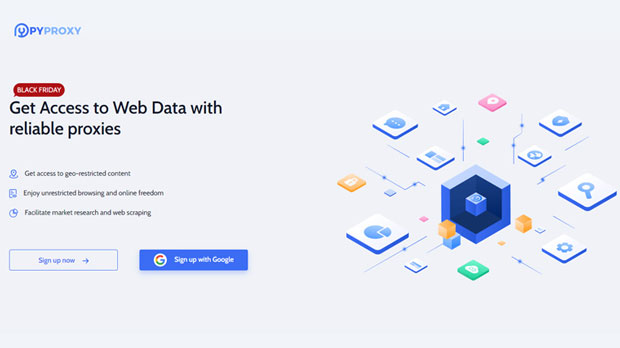Difference between Dynamic Residential IP Proxy and Static Residential IP Proxy?
Dynamic residential ip proxies and static residential IP proxies are both used to enhance online privacy, improve security, and facilitate various activities such as web scraping, market research, and ad verification. However, these two types of proxies have distinct differences that can impact their performance and suitability for different use cases. Dynamic residential IP proxies rotate frequently, offering more anonymity but less stability, while static residential IP proxies provide a stable and persistent IP address, which can be more reliable for tasks that require consistency. Understanding these key differences is essential for selecting the right proxy type for your specific needs. Understanding Dynamic Residential IP ProxiesDynamic residential IP proxies are typically used for tasks that require high anonymity and the ability to rotate IP addresses frequently. These proxies are usually tied to real residential addresses, which makes them less likely to be blocked or flagged by websites. The primary feature of dynamic residential IP proxies is their ability to rotate the IP address at regular intervals, offering users an added layer of privacy and making it harder for websites to track or block them.This dynamic nature of the proxies ensures that they can bypass rate-limiting mechanisms, CAPTCHA challenges, and IP-based restrictions, which is ideal for activities like web scraping and automated browsing. These proxies are particularly useful for applications where frequent access to a variety of sites is necessary, such as in data scraping or ad verification.However, dynamic IP proxies also come with a few limitations. As they rotate frequently, they may not be the best option for activities that require consistent, long-lasting connections, such as online account management or managing social media accounts. The rotation of IPs may also cause some disruptions to certain online services, making it harder for users to access specific websites or maintain a persistent online identity.Understanding Static Residential IP ProxiesIn contrast to dynamic residential IP proxies, static residential IP proxies provide users with a consistent and unchanging IP address. This type of proxy is tied to a particular residential address and does not rotate over time. Static residential IP proxies offer the advantage of stability, making them ideal for tasks that require long-lasting connections, such as online shopping, banking, or managing multiple social media accounts.The stability provided by static IP proxies ensures that users can maintain consistent access to websites without the interruptions caused by IP rotations. This is particularly beneficial for online businesses or individuals who need to create and manage multiple accounts, perform product research, or interact with websites that require a continuous IP presence.Despite their benefits, static residential IP proxies are not as anonymous as dynamic proxies. Since they do not change, they are more likely to be detected and flagged by websites, which could lead to the blocking or blacklisting of the IP address. As a result, users may need to employ additional measures to disguise their IP address or rotate their static proxies periodically to avoid detection.Key Differences Between Dynamic and Static Residential IP ProxiesWhen deciding between dynamic and static residential IP proxies, it is important to understand the core differences that can impact your specific use case. Below are the key aspects that distinguish dynamic and static residential proxies:1. IP Address Rotation: Dynamic residential IP proxies rotate their IP addresses at regular intervals, offering more anonymity but less stability. In contrast, static residential IP proxies provide a fixed IP address, ensuring consistency and stability. 2. Use Cases: Dynamic proxies are ideal for tasks that require frequent IP rotations, such as web scraping, ad verification, and bypassing geo-restrictions. Static proxies, on the other hand, are best for activities requiring a stable connection, such as account management, purchasing, and accessing banking services. 3. Anonymity: Dynamic residential proxies offer a higher level of anonymity due to the frequent change of IP addresses, making it harder for websites to track users. Static proxies are more vulnerable to detection since they use the same IP address, potentially leading to blacklisting or blocking. 4. Performance and Stability: Static proxies are generally more reliable for long-term connections, while dynamic proxies may experience interruptions or issues with persistent sessions due to IP rotations. 5. Cost: In many cases, dynamic residential IP proxies can be more expensive due to the higher level of anonymity and IP rotation features. Static proxies are typically more affordable, though their usage may require additional precautions to prevent detection.When to Use Dynamic Residential IP ProxiesDynamic residential IP proxies are best suited for tasks that require frequent IP address changes and high anonymity. Some common use cases for dynamic residential proxies include:1. Web Scraping: Dynamic proxies are ideal for web scraping activities where large volumes of data need to be extracted from websites without triggering anti-scraping mechanisms. The rotation of IP addresses ensures that the scraping process remains uninterrupted.2. Bypassing Geo-Restrictions: Dynamic proxies can be used to bypass geo-blocked content or services by rotating IP addresses in different regions. This allows users to access websites and content as though they are located in various countries.3. Ad Verification: To ensure that ads are displayed correctly across different locations, dynamic residential proxies can help verify ads in real-time by rotating IP addresses and simulating user interactions from different geographical areas.4. Avoiding IP Bans: Dynamic proxies are effective at avoiding IP bans since websites cannot easily track the IP address over a prolonged period. This makes them ideal for high-volume tasks that could otherwise lead to blocking.When to Use Static Residential IP ProxiesStatic residential IP proxies are well-suited for activities that require a persistent and reliable connection. Some common use cases for static residential proxies include:1. Managing Multiple Accounts: Static proxies are ideal for managing multiple accounts across different platforms, such as social media, e-commerce websites, and online banking. A consistent IP address ensures that accounts remain linked to the same user, preventing account suspensions.2. Online Shopping and Product Research: Static residential proxies are useful for online shopping and product research, where users need to monitor product availability, prices, and stock status across multiple sessions.3. Accessing Banking and Financial Services: For activities like online banking or accessing financial services, stability is crucial. Static proxies provide a steady IP address, making it easier to avoid security alerts and maintain uninterrupted access.4. Avoiding Captchas: Static proxies are effective for bypassing CAPTCHA systems when users need to access certain websites without triggering additional challenges. The consistency of the IP address helps avoid repetitive CAPTCHA prompts.ConclusionBoth dynamic and static residential IP proxies have their advantages and are suited for different purposes. Dynamic residential proxies excel in scenarios where anonymity, flexibility, and rotation of IP addresses are crucial, making them ideal for tasks such as web scraping, ad verification, and bypassing geo-restrictions. On the other hand, static residential IP proxies are better for activities that require a stable and consistent connection, such as managing multiple accounts or accessing sensitive services like online banking.Choosing between dynamic and static residential IP proxies depends on the specific requirements of your tasks, including the need for stability, anonymity, or frequency of IP address changes. By understanding the differences between these two types of proxies, users can make more informed decisions to ensure the best performance and security for their online activities.
2025-01-27

























































